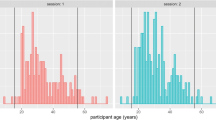Abstract
Everyday, consumer-level technologies such as mobile technologies may lend themselves to be repurposed for special needs of the populations. In this three-part study, we aimed to investigate whether the Amazon Echo™, a popular personal assistant general consumer product, can function as a speaker-independent device that permits the hands-free retrieval of visual supports for children with autism. Phase 1 investigated whether the Echo’s speaker-independent speech recognition system, linked to a proprietary Amazon “Skill,” could retrieve visual supports in order to facilitate direction following (e.g., “put the girl under the bowl”). The accuracy with which the Echo retrieved and delivered visual supports to the iPad was found to be low, suggesting that the Echo cannot function as a speaker-independent speech recognition system. Subsequently, we customized the vocabulary that was delivered to the Echo with the relevant vocabulary and repeated the protocol in phase 2. A significant increase in accuracy was noted. Finally, in phase 3, the experimenter asked the Echo to retrieve visual supports in the presence of a child with autism while monitoring correct implementation of directives based on successful retrieval by the Echo. Results will be discussed in terms of implications for future research.


Similar content being viewed by others

References
Matson, J. L., Mahan, S., Kozlowski, A. M., & Shoemaker, M. (2010). Developmental milestones in toddlers with autistic disorder, pervasive developmental disorder—not otherwise specified and atypical development. Developmental Neurorehabilitation, 13, 239–247.
McNaughton, D., & Light, J. (2013). The iPad and mobile technology revolution: benefits and challenges for individuals who require augmentative and alternative communication. Augmentative and Alternative Communication, 29, 107–116.
Remner, R., Baker, M., Karter, C., Kearns, K., & Shane, H. C. (2016). Use of augmented input to improve understanding of spoken directives by children with moderate to severe autism spectrum disorder. eHEARSAY, Journal of the Ohio Speech Language Hearing Association, 6(3), 4–10.
Sevcik, R. A. (2006). Comprehension: An overlooked component in augmented language development. Disability and Rehabilitation, 28(3), 159–167.
Schlosser, R. W. (2002). On the importance of being earnest about treatment integrity. Augmentative and Alternative Communication, 18, 36–44.
Schlosser, R. W., Laubscher, E., Sorce, J., Koul, R., Flynn, S., Hotz, L., Abramson, J., Fadie, H., & Shane, H. (2013). Implementing directives that involve prepositions with children with autism: A comparison of spoken cues with two types of augmented input. Augmentative and Alternative Communication, 29, 132–145.
Schlosser, R. W., Shane, H. C., Allen, A., Abramson, J., Laubscher, E., & Dimery, K. (2015). Just-in-time supports in augmentative and alternative communication. Journal of Physical and Developmental Disabilities, 28(1), 177–193. https://doi.org/10.1007/s10882-015-9452-2.
Shane, H. C. (2006). Using visual scene displays to improve communication and communication instruction in persons with autism spectrum disorders. Perspectives on Augmentative and Alternative Communication, 15, 8–13.
Shane, H. C., & Weiss-Kapp, S. (2008). Visual language in autism. San Diego: Plural Publishing.
Shane, H. C., Laubscher, E., Schlosser, R. W., Flynn, S., Sorce, J. F., & Abramson, J. (2012). Applying technology to visually support language and communication in individuals with ASD. Journal of Autism and Developmental Disorders, 42, 1228–1235.
Tager-Flusberg, H., & Kasari, C. (2013). Minimally verbal school-aged children with autism spectrum disorder: the neglected end of the spectrum. Autism Research, 6(6), 468–478. https://doi.org/10.1002/aur.1329.
Acknowledgements
Funding was provided by the Children’s Hospital Medical Center Otolaryngologic Foundation, Inc. Research Committee. The authors gratefully acknowledge Ashok Kumar, Amanda O’Brien, and Christina Yu for their contributions to the study.
Author information
Authors and Affiliations
Corresponding author
Rights and permissions
About this article
Cite this article
Allen, A.A., Shane, H.C. & Schlosser, R.W. The Echo™ as a Speaker-Independent Speech Recognition Device to Support Children with Autism: an Exploratory Study. Adv Neurodev Disord 2, 69–74 (2018). https://doi.org/10.1007/s41252-017-0041-5
Published:
Issue Date:
DOI: https://doi.org/10.1007/s41252-017-0041-5



